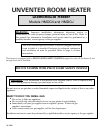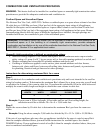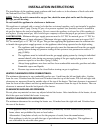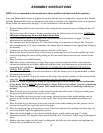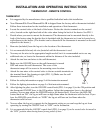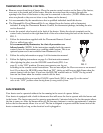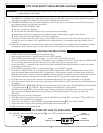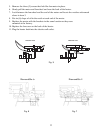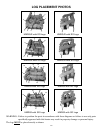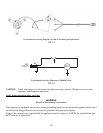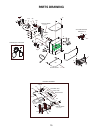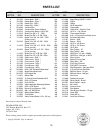
4
COMBUSTION AND VENTILATION PROVISIONS
WARNING: This heater shall not be installed in a confined space or unusually tight construction unless
provisions are provided for adequate combustion and ventilation air.
Confined Space and Unconfined Space
The National Fuel Gas Code, ANSI Z223.1 defines a confined space as a space whose volume is less than
50 cubic feet per 1,000 Btu per hour (4.8m³ per kw) of the aggregate input rating of all appliances
installed in that space and an unconfined space as a space whose volume is not less than 50 cubic feet
per Btu per hour (4.8m³ per kw) of the aggregate input rating of all appliances in that space. Rooms
communicating directly with the space in which the appliances are installed, through openings not
furnished with doors, are considered a part of the unconfined space.
Unusually tight construction is defined as construction where
:
a. Walls and ceilings exposed to the outside atmosphere have a continuous water vapor retarder
with a rating of 1 perm (6 x10
-
¹¹ kg per pa-sec-m²) or less with openings gasketed or sealed, and
b. Weather stripping has been added to openable windows and doors, and
c. Caulking or sealants are applied to areas such as joints around windows and door frames,
between sole plates and floors, between wall-ceiling joists, between wall panels, at penetrations
for plumbing, electrical and gas lines and at other openings.
Instructions for determining maximum Btu’s for a room
Step 1
This calculation is for combustion and ventilation air provisions only and is not intended to be used for
sizing for heating comfort. To determine the maximum Btu’s allowed for a given room size you will need
to calculate the volume of the room in cubic feet. To perform this calculation, fill in the table below and
multiply the room’s width, length and height to obtain the room volume in cubic feet.
Example:If your room is 20 feet in length, 16 feet wide and has an 8 foot ceiling height, the
calculation would be as follows: 20 x 16 x 8 = 2,560 cubic feet.
Step 2
Divide the room volume by 50 cubic feet to determine the maximum Btu’s per hour the room can
utilize.
Example:Using the above example: 2,560 cubic feet divided by 50 = 51.2 x 1,000 = 51,200 Btu’s.
If the rate of your appliance plus any other gas appliances installed in the space is rated at more Btu’s
than the example calculated above, you must follow instructions for confined space. See shaded
WARNING above. If your appliance is rated at less Btu’s than the example calculated above, then your
area is considered unconfined space.
WARNING: If the area in which the heater may be operated is smaller than that defined as an
unconfined space or if the building is of unusually tight construction, provide adequate
combustion and ventilation air by one of the methods described in the National Fuel Gas Code,
ANSI Z223.1, Section 5.3 or applicable local codes.
ROOM
LENGTH
ROOM
WIDTH
ROOM
HEIGHT
ROOM VOLUME
IN CUBIC FEET
X X =



